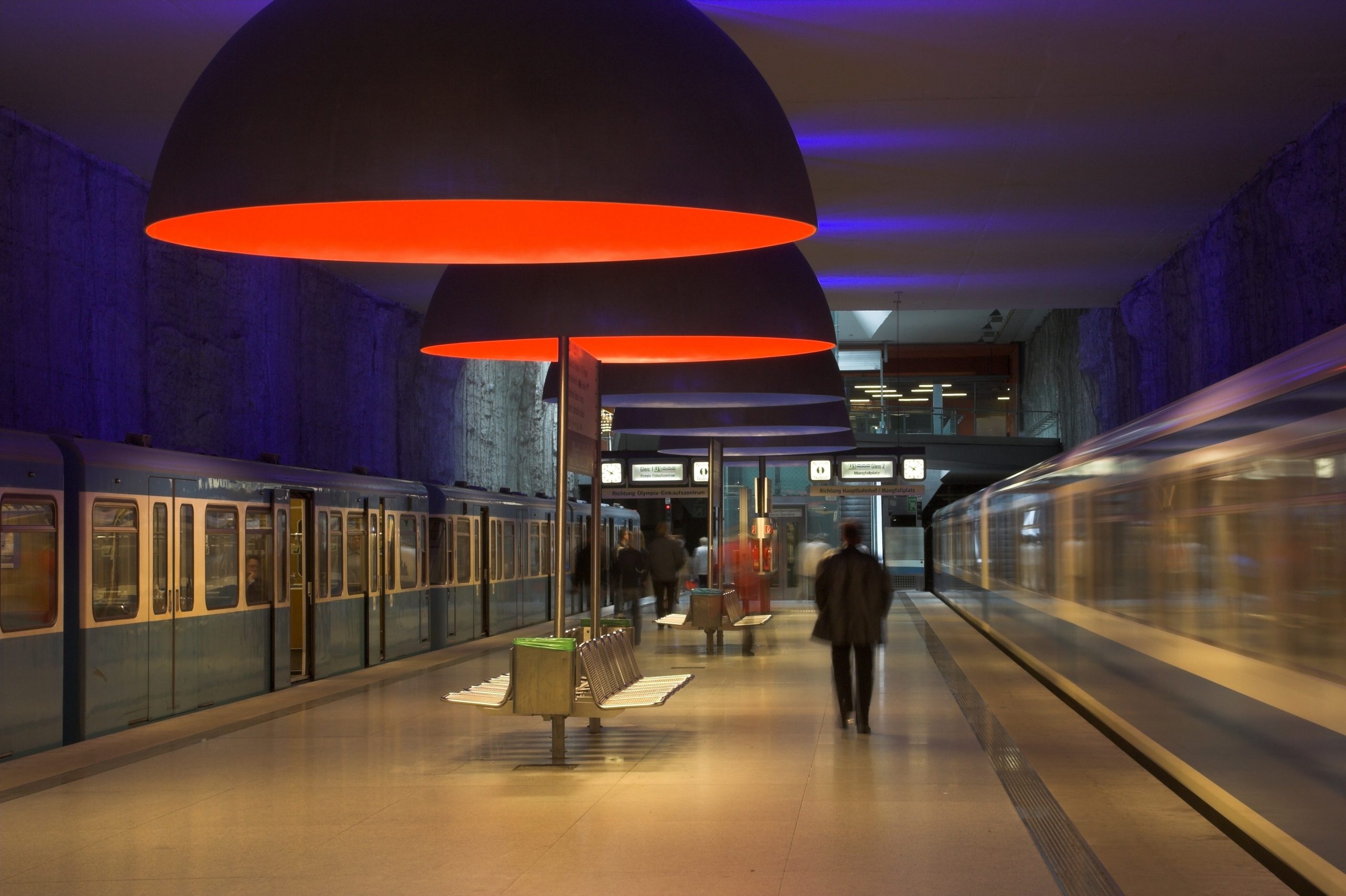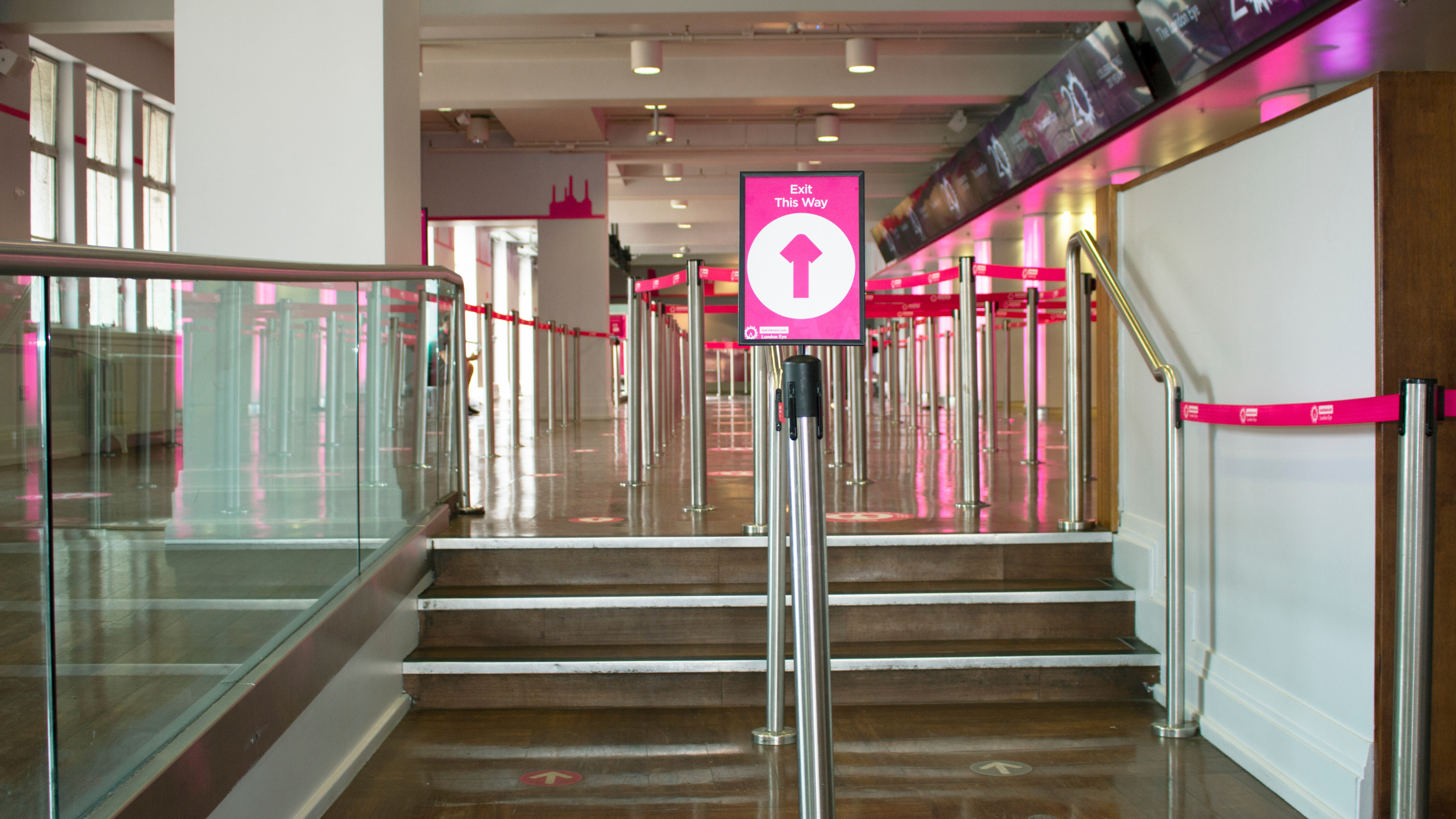- Home
- Sectors
- Solutions
- Tensabarrier®
- Tensator® Charging Stations
- Tensamedia® Wayfinding and Signage
- Lawrence® Post & Rope
- Tensator® Airport Passenger Guidance System
- Electronic Queuing – eQ™
- Tensaguide® Modular Barrier System
- Tensator Micam Protection – TMP
- Safety Solutions
- Access Control
- In-Queue Merchandising
- Virtual Queuing – VQMS
- Tensator® Virtual Assistant
- Custom & Bespoke Solutions
- Resources
- About
- Contact Us
- Shop
 English (English)
English (English)
19
Jul

Taking a journey by rail is not as straightforward for some passengers as it is for others. For people with a disability and reduced mobility, those who are visually impaired or elderly, or have pushchairs or bulky luggage in tow, a railway station can prove incredibly difficult to navigate. Accessible train station design should be a priority for those managing transport safety in the rail industry to ensure inclusivity for those with mobility challenges.
An easy entrance – wheelchair accessible train stations
If disabled train travel is continually found to be difficult, this alone may be enough to put them off even attempting to travel by rail. While most access routes to station entrances will have dropped kerbs, if there are steps leading up to the entrance, consider installing a gentle slope instead of, or in addition to, is essential. Any steps that are present throughout the station and at its entrance should incorporate highlighted anti-slip areas, to make them more easily recognised by people who are visually impaired, together with dual-height handrails for safer stair use.
Improved queue management for accessible train station design
Queues within a station are often unavoidable, especially at peak times. Having effective measures in place to deal with high levels of footfall, taking into account the needs of all passengers, is therefore paramount.
In areas where queuing is a regular occurrence, the challenge can be to ensure passenger safety without compromising accessibility. To help meet these requirements, we have developed a new low-profile universal base for Tensabarrier®. With the lowest leading edge on the market measuring just a few millimetres high, the design enables wheelchairs and pushchairs to pass over the base more easily, and reduces the likelihood of trips and falls, including for those who are visually impaired or use a mobility aid.
The new design can be used with any barrier that is compatible with the Universal base. A trial by service users at a disabled charity found that wheelchair and white cane users found it much easier to negotiate than conventional systems.
Health and Safety in train stations
In environments like railway stations, it is inevitable that hazards such as broken floor tiles, spillages or escalators and stairs undergoing repair will occur and it is of course imperative that these are dealt with quickly and effectively.
It is important to ensure that in dealing with these issues, a new hazard or obstacle is not inadvertently created for people with disabilities. Cordoning an area off must be done with appropriate equipment to ensure that the cordon itself does not become an obstruction – for people with sight issues, for example.
The Tensabarrier® system, for example, is already widely used in transport hubs to cordon off areas that are potentially unsafe for employees or members of the public. Deployed with the new low-profile bases, they could provide the ideal mobility-friendly solution.
Accessible facilities
Reviewing current station facilities to assess their suitability for all of your customers may highlight some potential areas for improvement. As standard, railway stations should offer accessible toilets for those with disabilities, as well as considering family toilets with baby changing facilities and accommodating passengers with bulky luggage.
Accessible to all
All businesses have a duty of care towards their customers, but approaching these responsibilities from a customer-first perspective can pay dividends.
Ensuring stations are easy to navigate for all users, regardless of mobility, vulnerability or other potential accessibility challenges, removes potential barriers, both physical and mental, opening up the possibility of rail travel to all. For more information about solutions for accessible train station design, why not take a look at our Tensabarrier® brochure? To download, please click the image below.




